
One of the biggest advantages of AurelKaorto® footwear is that while retaining the original design of the upper with minor adjustments to the bottom or underfoot,
we get the orthopedic character of the shoes. This is possible due to the special properties of the bottom.
The material used for the manufacture of the bottom is a type of rubberproduced by the Italian company VIBRAM®, with a simple tread formand exceptional plasticity.
This structure allows you to glue the foot adjustment elements.


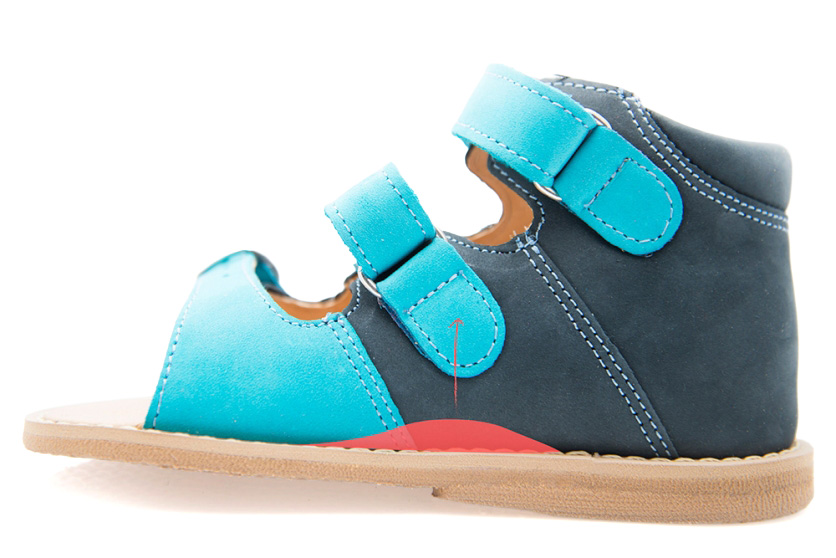
The element is placed inside the shoe, under the lining, at the height of the longitudinal arch. The support can be of different heights, depending on the individual needs of the customer.
Correction recommended most often for:
valgus of the knees, flat-valgus feet.

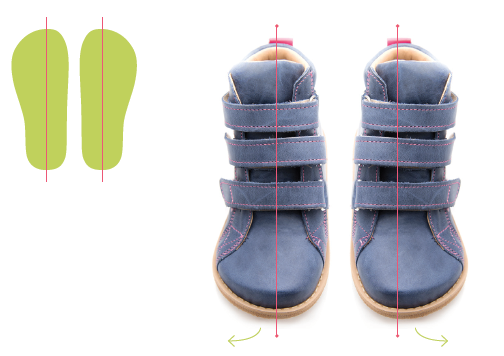
The hoof is positioned in the position of abducting the forefoot (causes the forefoot to visit outwards). The folds from the inner side of the foot are extended forward, to the head of the first metatarsal bone (the place of formation of the hallux valgus). Footwear usually has a corset reinforcement. As the name implies, “antivarus” (from Latin varus - spittle) counteracts spoils.The hoof is set in a position receding the forefoot (causes the forefoot to visit outwards). The folds from the inner side of the foot are extended forward, to the head of the first metatarsal bone (the place of formation of the hallux valgus). Footwear usually has a corset reinforcement. As the name implies, “antivarus” (from Latin varus - hoarseness) counteracts spoil.The element is placed inside the shoe, under the lining, at the height of the longitudinal arch. The support can be of different heights, depending on the individual needs of the customer.
Correction recommended most often for:
clubfoot, bowed feet, pigeon gait

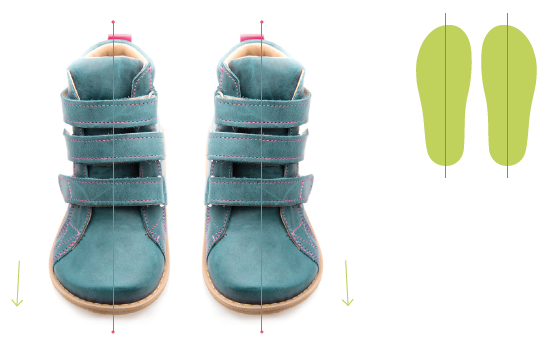
The hoof has a straight shape (it is neither visited nor brought) is devoid of a pronounced hollow from the medial side at the height of the longitudinal vault. The folds from the inner side of the foot are extended forward, to the head of the first metatarsal bone (the place of formation of the hallux valgus). Footwear usually has a corset reinforcement. As the name implies, “antivarus” (from Latin varus - hoarseness) counteracts spoil.The element is placed inside the shoe, under the lining, at the height of the longitudinal arch. The support can be of different heights, depending on the individual needs of the customer.
Correction recommended most often for:
clubfoot, bowed feet, pigeon gait.

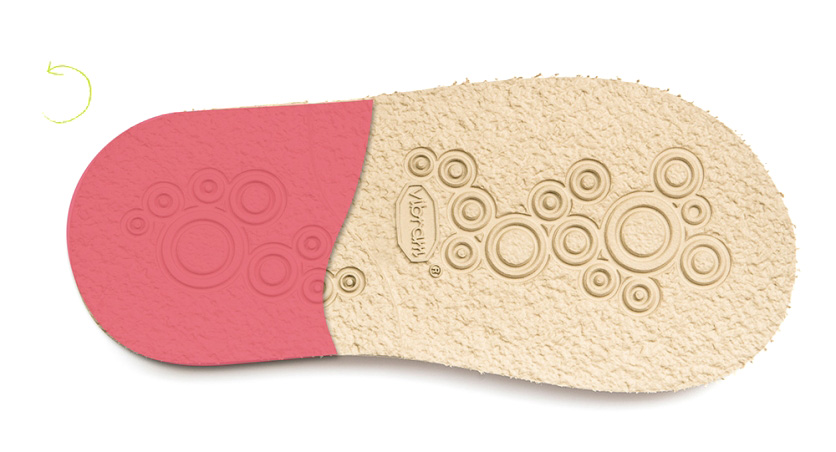
The heel raises the hind foot relative to the forefoot and slightly changes the alignment of the outer edge of the foot relative to the center axis. Correction is performed in the sole.
Correction recommended most often for:
clubfoot, clubfoot.

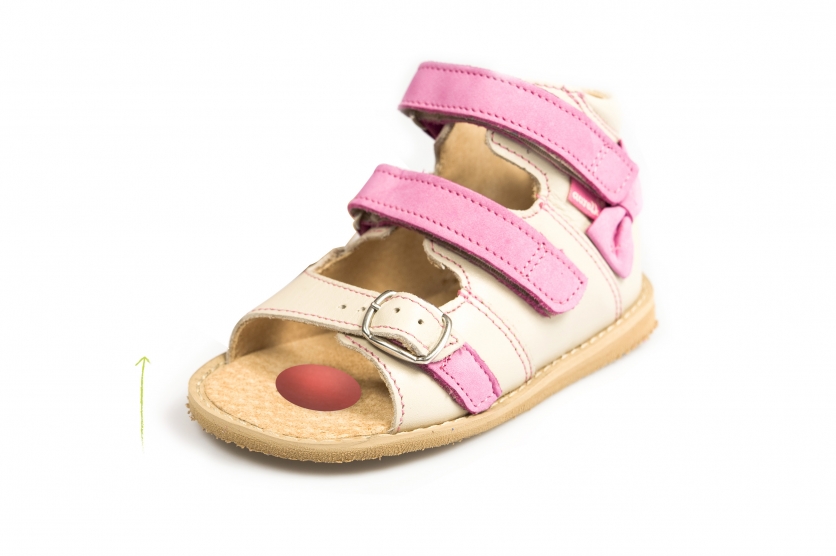
Prophylactic for pregnant women and people performing standing and walking work. Pelota relieves the three metatarsal heads (II, III, IV), prevents the formation of hammertoes and the formation of a convex forefoot. The element is pasted under the lining on the appropriate lengthfeet. The place of attachment of the pellet is determined on the basis of the impression of the plantar side of the foot with its outline marked.
Correction recommended most often for:
forefoot overload syndrome, Morton's syndrome, hollow foot, metatarsal pain, fractures of the metatarsal bones.


The purpose of the correction is to change the position of the outer edge of the foot relative to the inner edge. The pronating wedge is the opposite of the supinating wedge. Modification can be made in the sole or inside the shoe. It is characterized by the elevation of the outer edge of the foot. Wedge can be of different length and height. Made inside AurelKaorto® brand shoes must not exceed 1 cm in height (open models) or 0.5 cm (models with a covered forefoot). The wedge performed in the sole in open and closed shoes can have different heights depending on the doctor's recommendation.
Correction recommended most often for:
hoarseness of the knees, clubfoot, adduction of the forefoot.


It works similarly to the supinating Thomas Heel, only the opposite, that is, it causes the lower leg to deviate inward from the central axis. The pronation heel is elevated from the outside. Its height can be different, according to the doctor's recommendation. Correction is performed in the sole.
Correction recommended most often for:
clubfoot, clubfoot.

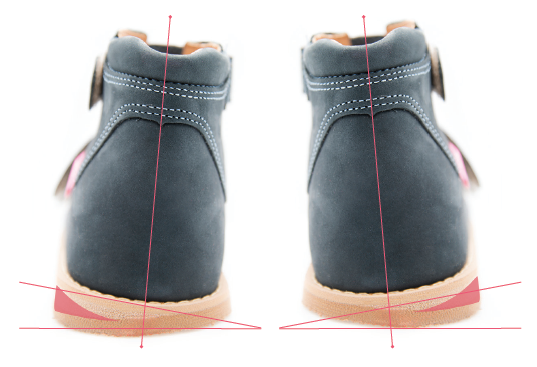
Correction is the opposite of supination of the hindfoot. Changes the alignment of the outer edge of the foot relative to the center axis. Pronation can be done inside the shoe or outside - in the sole. The amount of correction is conditioned by the doctor's recommendation. Correction covers only the hind legs.
Correction recommended most often for:
clubfoot, clubfoot.

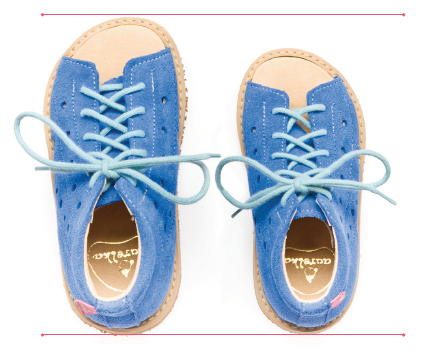
Modification of footwear performed in case of different length of feet, e.g. right shoe size 25, left shoe size 27. In case of a significant difference in the length of the feet, the difference also applies to their stiffness. This fundamentally affects the visual effect of the product. Keeping in mind the good of the client, we make every effort to make these differences as little visible as possible.Correction is the opposite of supination of the hindfoot. Changes the alignment of the outer edge of the foot relative to the center axis. Pronation can be done inside the shoe or outside - in the sole. The amount of correction is conditioned by the doctor's recommendation. Correction covers only the hind legs.
Correction recommended most often for:
Correction appropriate for different foot lengths


Modification of footwear, most often the sole, the purpose of which is to equalize the difference in the length of the lower limbs. In AurelKaorto® brand footwear, the abbreviation can be made in the sole or in the insole (inside the shoe). The method of performing the correction is determined by the height of the hash.
Possible variants of execution of modifications:
- abbreviation made inside the shoe - if its height does not exceed 1 cm in the hind foot and 0.5 cm in the forefoot
- short in the sole (each height depending on the individual needs of the customer)
- part of the abbreviation made inside the shoe in cases where the correction is supposed to be less visible) the remaining part of the shortcut is made in the sole. The abbreviation inside should not exceed 1 cm in the hindfoot and 0.5 cm in the forefoot. The outer part of the shortcut can have a different height depending on the individual needs of the customer.
Shortening is always performed with chamfering at the height of the firsthead of the metatarsal bone. It is also possible to carve in the heel part, which makes it easier to roll the foot at higher abutments. At the request of the customer, the shortcut can be made without reaming, and with the same height both in the hind foot and in the forefoot.
Correction recommended most often for:
different length of the lower limbs.


The wedge can be made in the sole or inside the shoe - in the insole. It can be of different length and height. It is characterized by the elevation of the inner edge of the foot. The wedge made inside Aurelka® shoes must not exceed 1 cm in height (open models) or 0.5 cm (models with a covered forefoot). Wedge performed in the sole in open and closed footwear, can have a different height depending on the doctor's recommendation.
Correction recommended most often for:
valgus of the knees, flat-valgus feet.


The correction is in the form of a modified Thomas Heel in the option. It is used to correct the deviation of the axis of the lower leg outward from the central axis. The supinating heel is raised from the inside. The height of supination can be different, depending on the doctor's recommendation. Correction is performed in the sole.
Correction recommended most often for:
valgus of the knees, flat feet


Correction is characterized by raising the inner edge of the foot. As the name implies - it covers only the hind legs. It can be made in the sole or inside the shoe - in the insole. Supination can be of different height according to the doctor's recommendation.Correction is in the form of a modified Thomas Heel in option. It is used to correct the deviation of the lower leg axis outward from the central axis. The supinating heel is raised from the inside. The height of supination can be different, depending on the doctor's recommendation. Correction is performed in the sole.
Correction recommended most often for:
flat-valgus feet, valgus of the knees.


Correction is characterized by a significant increase in the standard overlap (in preventive footwear, the fold does not exceed the height of the heel). The tab is made of very rigid material, it performs the function of a corset. We distinguish heel and front stiffening.
Correction recommended most often for:
MPD, flabbiness of the muscles of the foot and joints

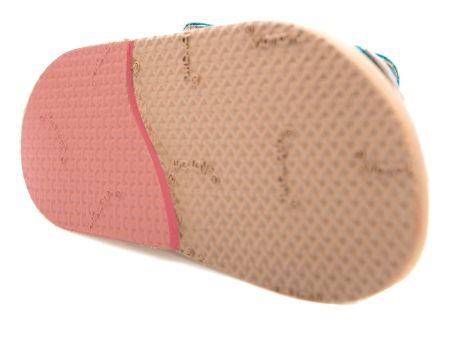
It causes only a slight elevation of the heel relative to the toes. The heel is made in the sole.
Correction recommended most often for:
valgus knees, flat-valgus foot.

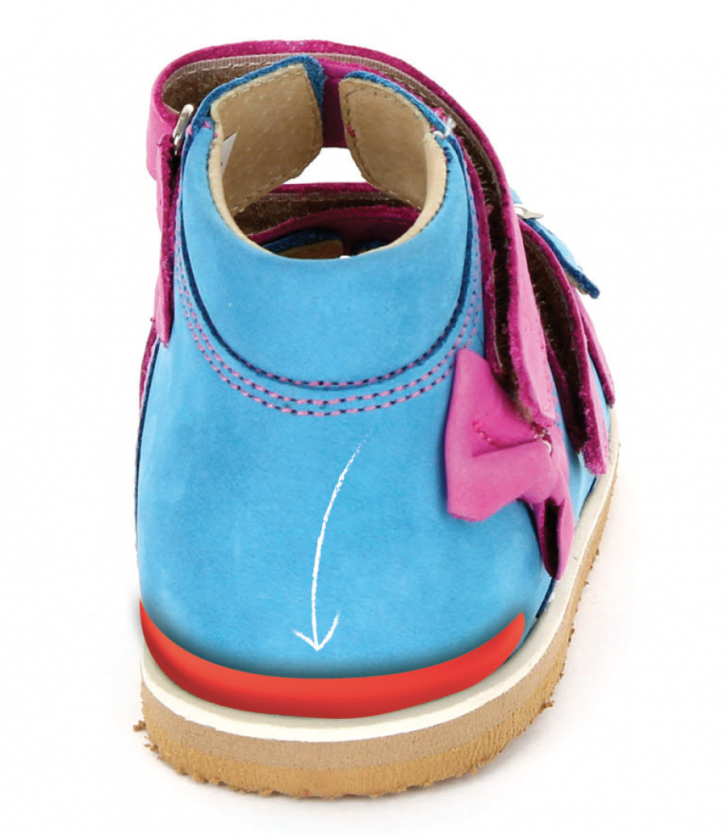
Stabilizes the correct seating of the heel relative to the axis of the lower leg (creates a trough for the heel). The element is pasted in the rear foot under the lining.
Correction recommended most often for:
hollow, rheumatoid feet with heel instability.


The first variant
equal tabs on the outer and inner sides.
Correction recommended most often for:
physiological flat feet, static flat foot, flat-valgus foot. The length of the tabs is 2/5 of the length of the shoe insole, the height does not exceed the height of the heel.
The second variant
the tab on the medial side is longer than the outer fold.
Correction recommended most often for:
physiological flat feet, static flat foot, flat-valgus foot. The fold on the inner side is 3/5 of the length of the shoe insole, the wing on the outer side is 2/5 of the length of the shoe insert, the height corresponds to the height of the heel.
The third option
fold significantly extended towards the fingers from the outer side with respect to the medial fold.
Correction recommended most often for:
flared foot, clubfoot. The length of the medial fold is 7/10 of the length of the shoe insole, the wing of the outer fold is 2/5 of the length of the shoe insert, the height is similar to variant I and II.
The fourth variant
tabs of the same length on both sides.
Correction recommended most often for:
drooping foot, spastic horse foot. The fold on both the inner and outer sides covers 3/5 of the length of the insole of the shoe, the height of the fold in the heel part 2/3 of the length of the foot.